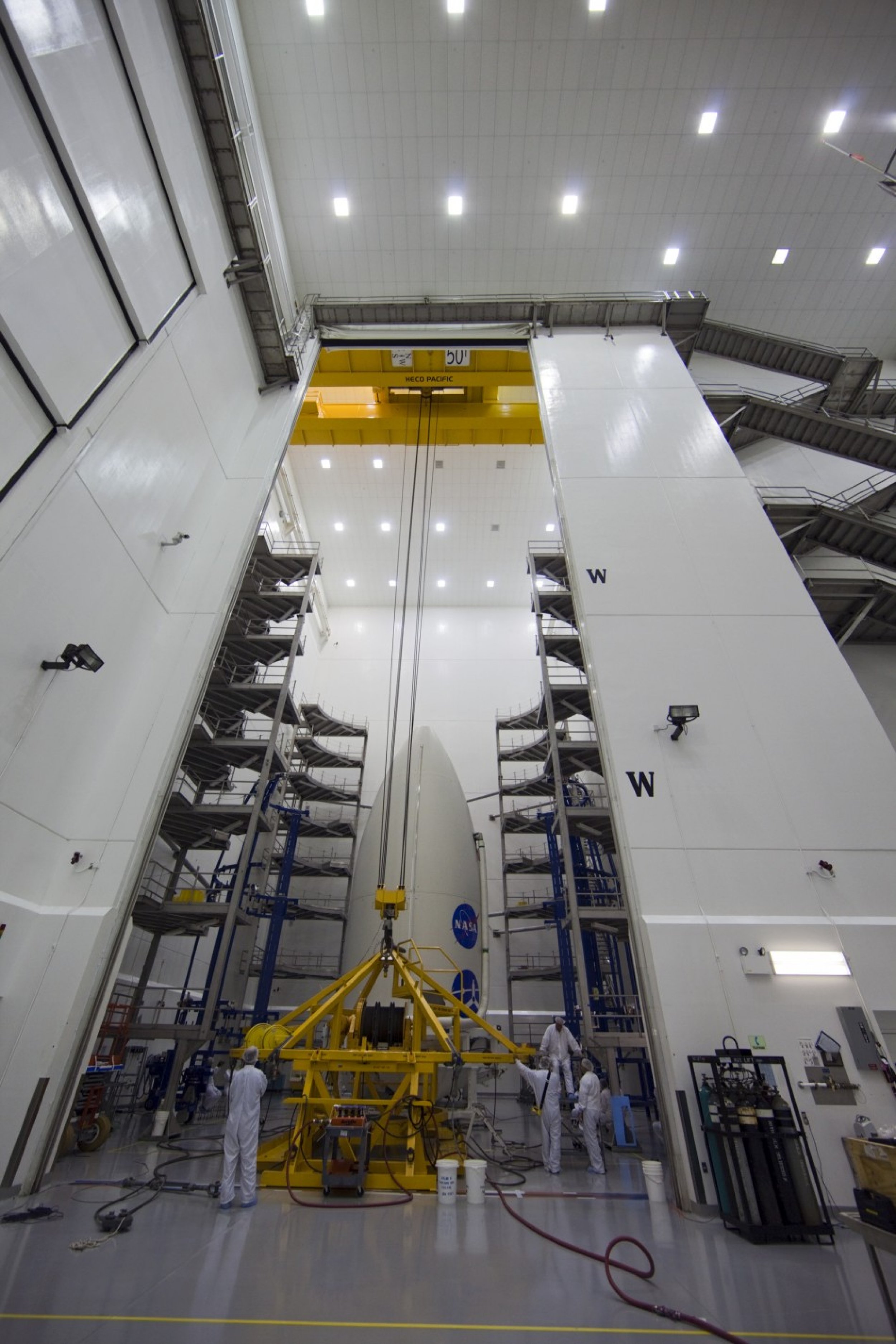NASA's Jupiter-Bound Juno Spacecraft Mated to Rocket (PHOTOS)
NASA is scheduled to launch the Juno spacecraft on August 5 from Cape Canaveral Air Force Station, Florida, to the largest planet in our solar system, Jupiter, in what will be the first of three upcoming planetary missions.
The launch period for Juno spacecraft opens August 5, and extends through August 26. For a next week Friday liftoff, the launch window opens at 11:34 am EDT and remains open through 12:43 pm EDT.
On July 27, Juno spacecraft completed its last significant terrestrial journey with a 15-mile (25-kilometer) trip from Astrotech Space Operations in Titusville, Florida, to its launch pad at the Cape Canaveral Air Force Station.
The solar-powered, Jupiter-bound spacecraft, which will help scientists to discover how the planets were formed, was secured into place on top of its rocket at 10:42 am EDT on Wednesday.
The space probe will arrive at Jupiter in July 2016 and orbit its poles 33 times at 160,000 mph (the fastest man-made object in history) and fly as close as 3,100 miles above the planet's atmosphere. This will help scientists learn more about the gas giant's interior, atmosphere and aurora.
The solar-powered satellite will lift atop a Atlas V rocket made by United Launch Alliance, a commercial launch services firm owned by Boeing and Lockheed Martin.
"We're about to start our journey to Jupiter to unlock the secrets of the early solar system. After eight years of development, the spacecraft is ready for its important mission," said Scott Bolton, the mission's principal investigator from the Southwest Research Institute in San Antonio.
The 8,000-pound solar-powered probe will deploy eight scientific instruments to determine how much water Jupiter holds, a key factor in finding out how the planet was formed.
"Now that the Juno payload is atop the most powerful Atlas rocket ever made, a final flurry of checks and tests can begin and confirm that all is go for launch. The final series of checks began Wednesday with an on-pad functional test. The test was designed to confirm that the spacecraft is healthy after the fueling, encapsulation and transport operations," NASA said in a statement.
The probe completed hydrazine fuel loading, oxidizer loading and final tank pressurization this month. The Juno mission is part of the New Frontiers Program managed at NASA's Marshall Space Flight Center in Huntsville, Alabama.
If the planet was formed roughly where it is positioned today, NASA scientists expect Jupiter to hold nine times more water than the sun. But if the planet was formed farther out in the solar system, the amount of water might be three times more than solar levels as it would be colder.
This will help scientists to determine how other planets in our solar system ended up in the current positions. Juno will be clothed with a stronger body -- the probe will be layered with titanium -- than its predecessor Galileo but it is expected not to survive more than a year due to Jupiter's harsh radioactive environment.
Juno will make a suicidal plunge into Jupiter's atmosphere at the end of its life span, to avoid possible contamination of the planet's potentially life-bearing moons.
NASA intends to launch twin robotic spacecraft on a moon mission in September, and the red planet mission by Mars Science Laboratory in November. The Mars mission is to determine the planet's "habitability".
Juno will be the first mission to Jupiter using solar panels instead of the radioisotope thermoelectric generators (RTGs) used by Pioneer 10, Pioneer 11, the Voyager program, Cassini–Huygens, and the Galileo orbiter.
The Juno spacecraft uses three solar arrays symmetrically arranged around the spacecraft, which are stowed against the sides of the spacecraft for launch. Immediately after launch the arrays deploy.
Two of the arrays have 4 panels each, and the third array has 3 panels with a magnetometer experiment in place of the fourth panel. The total area of the arrays is over 60 square metres (650 square feet). This is enough to produce about 15 kilowatts (20 hp) while in Earth orbit, but only 486 watts (0.652 hp) when Juno arrives at Jupiter, declining to 420 watts (0.56 hp) as the radiation degrades the cells.
The Atlas V rocket is assembled in Decatur, Alabama; Harlingen, Texas; San Diego, California; and at United Launch Alliance's headquarters near Denver, Colorado.
Take a glimpse of Juno spacecraft mating with the Atlas V rocket:







© Copyright IBTimes 2024. All rights reserved.





















